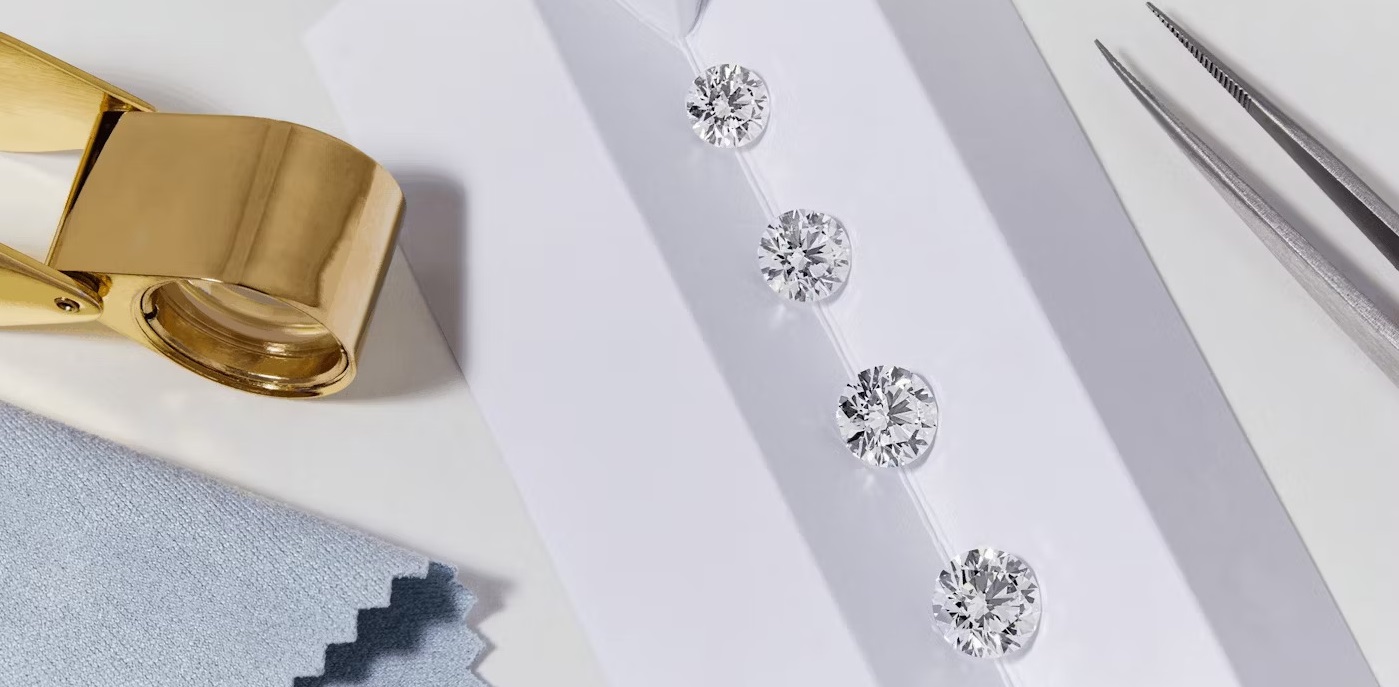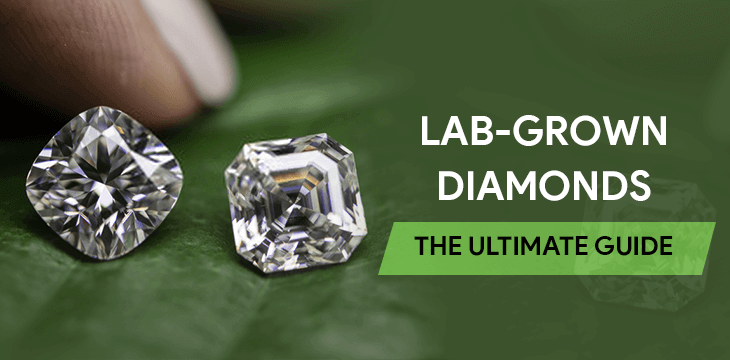The world of diamonds has undergone a remarkable transformation with the emergence of lab-grown diamonds. These diamonds, often referred to as synthetic or cultured diamonds, have garnered significant attention in recent years. While natural diamonds have been cherished for their rarity and beauty, lab-grown diamonds offer an alternative that’s ethical, sustainable, and more affordable. In this comprehensive comparison, we will delve into the distinctions between natural and lab-grown diamonds, explore reasons for choosing each, and highlight some of the best options in both categories.
Are Lab-Grown and Natural Diamonds Different?
Lab-grown diamonds and natural diamonds are indeed distinct in terms of their origin, but they share Lab-grown diamonds and natural diamonds share nearly identical physical, chemical, and optical properties, making them very difficult to distinguish without specialized equipment. However, their origin and the processes by which they are formed are the key differences between the two:

- Origin:
- Natural Diamonds: Natural diamonds are formed deep within the Earth’s mantle over millions of years. They are created under extremely high pressure and temperature conditions, typically at depths of 100 miles or more beneath the Earth’s surface. Natural diamonds are then brought to the Earth’s surface through volcanic eruptions or other geological processes.
- Lab-Grown Diamonds: Lab-grown diamonds or the man-made diamonds, as the name suggests, are created in controlled laboratory environments. They are produced using one of two primary methods: High Pressure High Temperature (HPHT) or Chemical Vapor Deposition (CVD). These methods replicate the conditions found in the Earth’s mantle, allowing carbon atoms to crystallize into diamonds over a shorter period.
- Formation Time:
- Natural Diamonds: Natural diamonds require millions of years to form in the Earth’s mantle. The combination of high pressure and temperature facilitates the transformation of carbon into diamond crystals over an extended geological timescale.
- Lab-Grown Diamonds: Lab-grown diamonds are created within weeks to months, depending on the production method used. The controlled conditions in the laboratory accelerate the diamond growth process.
- Rarity:
- Natural Diamonds: Natural diamonds are considered rare due to the geological processes required for their formation. Only a small fraction of diamonds mined are of gem-quality, adding to their perceived scarcity.
- Lab-Grown Diamonds: Lab-grown diamonds are more readily available, and their production can be controlled to meet market demand. While they are still considered valuable and beautiful, they lack the intrinsic rarity of natural diamonds.
- Market Perception:
- Natural Diamonds: Natural diamonds have enjoyed a long-standing market perception as luxury items and symbols of love and commitment. They are often associated with tradition and sentiment.
- Lab-Grown Diamonds: Lab-grown diamonds have gained acceptance and popularity in recent years, especially among consumers who value ethical sourcing and environmental sustainability.
Reasons to Choose Lab-Grown Diamonds
- Ethical Sourcing:
- No Involvement in Diamond Mining: Lab-grown diamonds do not contribute to traditional diamond mining practices, which have been associated with labor issues, human rights violations, and environmental concerns in certain regions. Choosing lab-grown diamonds supports more ethical sourcing practices in the industry.
- Environmental Sustainability:
- Reduced Environmental Footprint: The production of lab-grown diamonds has a significantly lower environmental impact compared to diamond mining. It consumes fewer resources, produces fewer carbon emissions, and minimizes habitat disruption, making it a more environmentally sustainable choice.
- Affordability:
- Cost-Effective: Lab-grown diamonds are typically priced 20-40% lower than their natural counterparts of similar quality. This affordability allows buyers to acquire larger or higher-quality diamonds within their budget.
- Quality Control:
- Consistent Quality: Lab-grown diamonds are created under controlled conditions, resulting in diamonds with consistent quality and fewer imperfections. Buyers can expect excellent clarity, color, and cut quality.
- Versatility:
- Variety of Options: Lab-grown diamonds come in a wide range of shapes, sizes, and colors, offering versatility to match different styles and preferences. This variety allows buyers to select the perfect diamond for their unique jewelry piece.
- Transparency:
- Detailed Certifications: Lab-grown diamonds often come with detailed certifications that provide information about the diamond’s quality and origin. This transparency allows buyers to make informed choices.
- Innovative Technology:
- Advancements in Production: Ongoing advancements in technology have improved the efficiency and quality of lab-grown diamond production, leading to a broader selection of high-quality options.
- Reduced Risk:
- Conflict-Free: Lab-grown diamonds are inherently conflict-free, as they are not tied to regions where conflict diamonds have been a concern. Buyers can be confident in the ethical nature of their purchase.
- Positive Consumer Sentiment:
- Growing Acceptance: Lab-grown diamonds are gaining acceptance among consumers who prioritize ethical and sustainable choices. This trend has contributed to a positive perception of lab-grown diamonds in the market.
- Customization:
- Tailored Designs: Lab-grown diamonds can be used in custom jewelry designs, allowing buyers to create unique and personalized pieces that match their individual style.
Reasons to Choose Natural Diamonds

- Historical Significance: Natural diamonds have a rich history, often passed down through generations and used in heirloom jewelry. They carry sentimental value and tradition.
- Intrinsic Rarity: Natural diamonds are valued for their rarity. The geological processes that create them are incredibly rare, contributing to their allure.
- Market Perception: Some consumers prefer natural diamonds due to their long-standing market perception and perceived value as a luxury item.
- Investment Potential: Certain natural diamonds, especially rare and highly sought-after stones, have the potential to appreciate in value over time.
The Best Lab-Grown Diamonds
- Brilliant Earth Lab Diamonds: Known for ethical sourcing, Brilliant Earth offers lab-grown diamonds in various shapes and settings, catering to a wide range of preferences and budgets.
- James Allen True Hearts Diamonds: James Allen’s lab-grown True Hearts diamonds are precision-cut for maximum brilliance, available in diverse styles and settings.
- Clean Origin Lab Diamonds: Clean Origin focuses on quality and transparency, offering a variety of lab-grown diamonds in different shapes and price ranges.
The Best Natural Diamonds
- Blue Nile Natural Diamonds: Blue Nile is renowned for its extensive selection of natural diamonds, providing a wide range of choices to suit various preferences and budgets.
- Tiffany & Co. Natural Diamonds: Tiffany & Co. is celebrated for its exceptional natural diamonds, known for their high-quality cuts and iconic settings.
- Harry Winston Natural Diamonds: Harry Winston offers some of the world’s most exquisite natural diamonds, characterized by their exceptional quality and exquisite craftsmanship.
Conclusion
The choice between lab-grown and natural diamonds is influenced by personal preferences, values, and budget considerations. Each type of diamond has its unique advantages, and the best choice depends on individual priorities. Whether you value the ethical and sustainable qualities of lab-grown diamonds or the historical significance and rarity of natural diamonds, the diamond market now offers options to cater to diverse tastes and values.…



